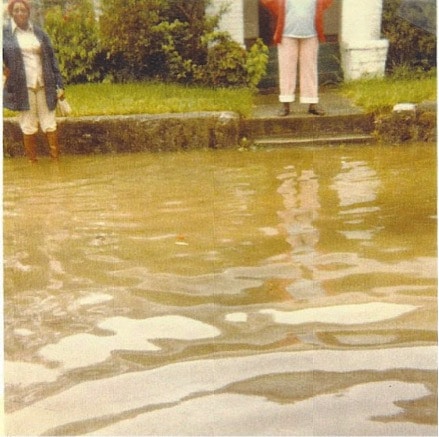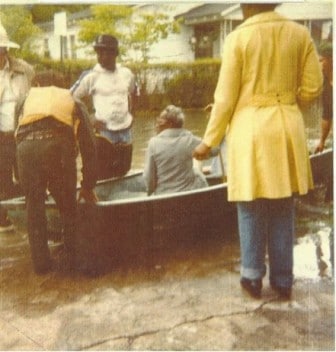Voices from Birmingham’s History: Flooding Along Village Creek in Ensley
Birmingham is in a valley, resting at the foothills of the Appalachians. The city’s creeks collect water running down from the mountains and filter it through the floodplains. Last week, WBHM reported on developers today taking a new interest in the 1925 Olmsted Plan for parks and green space in Birmingham. The Olmsted Plan preserved the city’s major tributaries, specifically those of Village and Valley Creek.
But the city didn’t follow the plan, and African-American industrial workers moved onto the flood plains. From 1988 to 2007, the City stepped in to complete a series of buyouts to remove homes from these areas.
As a child, Marilyn Roberts lived along Village creek in Ensley, a community that experienced years of flooding prior to citywide efforts to address the problem. She talked with Mary Scott Hodgin about her story and the impact of past flood events. Listen to what she has to say above, or read it below.

Village Creek Society
“There were times when the water would get in and it was so high it would cover half the room.”
“We moved to Ensley in 1960 from North Birmingham onto Eleventh Street. It was right on the creek bank, but we didn’t know about the flooding at the time when we moved. When we did find out about it, it was coming up the road — we were having to pack up everything, put furniture on chairs and get prepared to get out of the house. We could actually stand on the porch and look down the street and see when to leave the house before it would come all the way up the street. It was coming in fast.”
“Eventually we would have to leave our homes and go to dry land and then wait for the water to recede, and then go back in the house and we would have to clean up the house, clean up the muddy waters. There were times when the water would get in and it was so high it would cover half the room, and we had to go in and have someone gutter the sheetrock, redo the wiring, and redo the hardwood floors before we could move back in.”

Courtesy of Village Creek Society
“Eventually we would have to leave our homes and go to dry land and then wait for the water to recede and then go back in the house and we would have to clean up the house, clean up the muddy waters,” recalls Marilyn Roberts.
“One year, I think it was the last flood somewhere in 1983, when they had like eight feet of water, and my mom she was asleep and woke up and the water was up — it was so high they had to get the boats to go in and get her and she was standing on the banister until someone came and picked her up in a boat. It was scary. She didn’t want to go back up there after that.”
“The buyout came in the 1980s as well, right after the big flood. A lot of people wanted to move out because they didn’t want to go through that anymore and my mom was one of the ones that were bought out. They actually removed our house and placed it somewhere else. The land is still vacant there; they haven’t cultivated it into anything else but the city is working right now to put a park and trail and build it up for the families to come in and enjoy the park.”
How Alabama Power kept bills up and opposition out to become one of the most powerful utilities in the country
In one of the poorest states in America, the local utility earns massive profits producing dirty energy with almost no pushback from state regulators.
No more Elmo? APT could cut ties with PBS
The board that oversees Alabama Public Television is considering disaffiliating from PBS, ending a 55-year relationship.
Nonprofit erases millions in medical debt across Gulf South, says it’s ‘Band-Aid’ for real issue
Undue Medical Debt has paid off more than $299 million in medical debts in Alabama. Now, the nonprofit warns that the issue could soon get worse.
Roy Wood Jr. on his father, his son and his new book
Actor, comedian and writer Roy Wood Jr. is out with a new book -- "The Man of Many Fathers: Life Lessons Disguised as a Memoir." He writes about his experience growing up in Birmingham, losing his dad as a teenager and all the lessons he learned from various father figures throughout his career.
Auburn fires coach Hugh Freeze following 12th loss in his last 15 SEC games
The 56-year-old Freeze failed to fix Auburn’s offensive issues in three years on the Plains, scoring 24 or fewer points in 17 of his 22 league games. He also ended up on the wrong end of too many close matchups, including twice this season thanks partly to questionable calls.
In a ‘disheartening’ era, the nation’s former top mining regulator speaks out
Joe Pizarchik, who led the federal Office of Surface Mining Reclamation and Enforcement from 2009 to 2017, says Alabama’s move in the wake of a fatal 2024 home explosion increases risks to residents living atop “gassy” coal mines.








